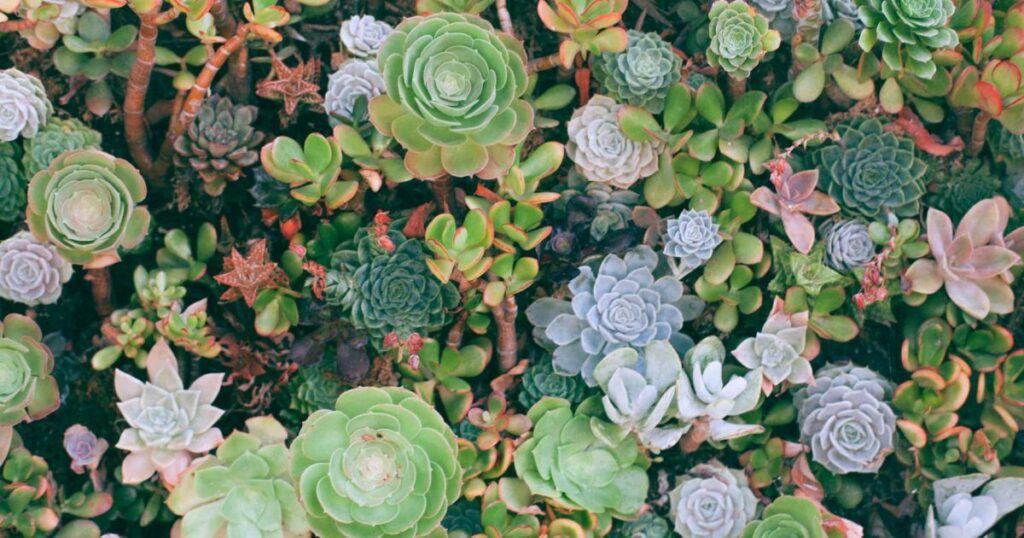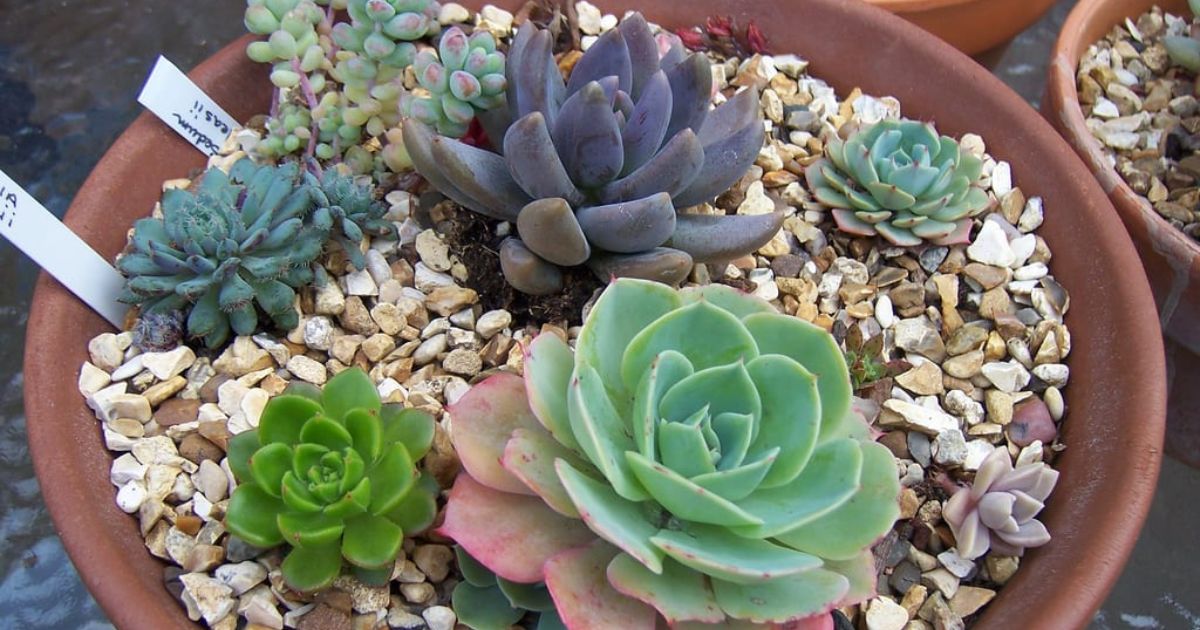Wondering about What Temp Can Succulents Survive Simply put, it refers to the temperature range within which succulent plants can thrive and endure. Succulents are known for their ability to withstand harsh conditions, but understanding the specific temperature requirements is crucial for their optimal growth and well-being.
Curious about the resilience of succulents? What Temp Can Succulents Survive is a question that piques the interest of plant enthusiasts and gardeners alike. The answer lies in the fascinating adaptability of succulents to various temperature extremes.
Understanding the specific temperature requirements is essential for successful succulent cultivation. What Temp Can Succulents Survive is a pivotal consideration when creating an ideal environment for these hardy plants. Generally, succulents prefer temperatures ranging from 60 to 80 degrees Fahrenheit (15 to 27 degrees Celsius).
Moving your plants indoors for the winter
As winter approaches, consider moving your plants indoors to protect them from the cold. Find a sunny spot near a window where they can still get the sunlight they need. Be mindful of the temperature inside your home, making sure it stays within the comfortable range for your plants.
Indoor spaces provide a more controlled environment, shielding your plants from frost and harsh weather conditions. Remember to check for pests before bringing them inside and adjust watering routines to accommodate the change in surroundings. By moving your plants indoors for the winter, you’re giving them a cozy retreat and ensuring their well-being until the warmer days return.
How to revive a frozen succulent

Reviving a frozen succulent is possible with a few simple steps. Firstly, gently remove the frozen planet from the cold environment and place it in a warmer space. Allow the succulent to thaw gradually to prevent shock. Next, assess the damage by checking for soft or discolored areas. Trim away any damaged parts using clean scissors or pruning shears.
To aid in the recovery of a frozen succulent, refrain from watering it immediately. Instead, wait until the soil has completely thawed and dried out. Once the soil is dry, provide the succulent with a moderate amount of water, allowing it to rehydrate slowly. Place the succulent in a well-lit area but away from direct sunlight until it shows signs of improvement.
Moving Plants Back Outdoors After Frost
After the frost passes, it’s time to bring your plants back outdoors. Check the weather to ensure it’s safe for them to return. Start with a few hours outside and gradually increase to help them readjust. Keep an eye on your plants to make sure they’re happy in their outdoor home. It’s crucial to pay attention to their watering needs, as overwatering can be detrimental to succulents.
If you’re wondering what happens if you overwater succulents, it’s important to note that these plants are adapted to arid conditions and have low water requirements. Overwatering can lead to root rot, a common issue that arises when the soil remains consistently soggy. To maintain the health of your succulents, be mindful of their water intake and allow the soil to dry out between watering sessions. This ensures a well-balanced and suitable environment for your outdoor succulents to thrive.
Plants may need time to recover from the frost, so be patient. If you see any damaged parts, trim them to promote new growth. Water the plants appropriately and provide some shade if it’s sunny. With a little care, your plants will thrive again in their outdoor space after the frost has passed.
Can all succulents survive winter outside?

Not all succulents can brave the winter chill outdoors. Some succulent varieties are more cold-tolerant and can withstand frosty temperatures, while others are more delicate and need protection from the winter cold. It’s important to know the specific needs of each succulent type to ensure they stay healthy during the colder months.
Before leaving succulents outside during winter, check their individual cold-hardiness. Hens and Chicks (Sempervivum), for example, can endure freezing temperatures, but tender succulents like Echeveria might need shelter from frost. Understanding the cold resilience of your succulents ensures they stay happy and thriving when the winter winds blow.
| Key Points | Description |
| Succulent Temperature Range | Explore the temperatures ideal for succulent survival. |
| Resilience Strategies | Succulents adapt to extremes, thriving in diverse climates. |
| General Temperature Range | 60-80°F (15-27°C) suits most succulents, but variations exist. |
| Dormancy Considerations | Understand signs like slowed growth and color changes during dormancy. |
| Care Adjustments | Adapt watering frequency during dormancy for optimal succulent health. |
How does the cold affect succulents?
Succulents, known for their resilience, can be affected by the cold. When temperatures drop, these water-storing plants may experience damage, as freezing temperatures can cause their cells to rupture. Cold weather can lead to the formation of ice crystals within the succulent tissues, disrupting their structure and impacting their ability to retain water.
Furthermore, prolonged exposure to cold temperatures can result in frost damage, causing discoloration, wilting, and even death of the outer layers of the succulent. To protect succulents from the cold, it’s advisable to provide shelter or move them indoors during freezing conditions. Additionally, using well-draining soil and avoiding overwatering can help minimize the adverse effects of cold weather on these hardy plants.
How to keep outdoor succulents alive during winter
Winter poses challenges for outdoor succulents, but with a few simple steps, you can ensure their survival. Firstly, consider moving succulent pots to sheltered areas, like covered patios, to shield them from harsh winter winds and frost. Providing a layer of mulch around the base of the plants helps in retaining soil warmth and prevents freezing.
Adjusting watering practices is key during winter. Reduce watering frequency, as succulents need less moisture in colder months. Water them sparingly and allow the soil to dry out between watering sessions to prevent root rot. By following these straightforward measures, you can keep your outdoor succulents thriving even when the winter chill sets in.
How often should I water outdoor succulents in the winter?
During the winter, outdoor succulents require less frequent watering. These hardy plants go into a dormant phase, needing less moisture to thrive. It’s crucial to let the soil dry out between watering sessions to prevent overwatering, which can harm the succulents during the colder months.
A good rule of thumb is to water outdoor succulents in winter every 2-3 weeks, or when the soil is completely dry. Adjust the frequency based on the specific needs of your succulent species and the local climate conditions. Remember, moderation is key to ensure your outdoor succulents stay healthy and resilient during the winter season.
Why are my outdoor succulents dying in the winter?
Outdoor succulents may struggle in winter due to the colder temperatures and increased moisture in the soil. These hardy plants, adapted to arid conditions, are sensitive to excessive water during the colder months, leading to root rot and other issues.
Additionally, winter sun exposure can be insufficient for outdoor succulents, affecting their growth. The combination of cold and lack of sunlight may weaken the plants, making them more susceptible to diseases. To ensure the well-being of outdoor succulents in winter, it’s crucial to adjust watering practices, provide adequate drainage, and, if possible, provide protection from extreme cold and limited sunlight.
How do I know if my succulent is dormant?
Ever wondered, “How do I know if my succulents are dormant?” Well, during dormancy, your succulent may show signs of reduced growth, like fewer new leaves or stems. This is a natural resting phase for succulents, often occurring in winter or dry seasons. If you notice slowed growth and a pause in new developments, your succulent might be taking a well-deserved break.
Another clue that your succulent is in dormancy is changes in its color. Some succulents might become slightly dull or paler during this rest period. Don’t worry; it’s just a temporary transformation as your succulents conserve energy. So, if you observe a slowdown in growth and a shift in color, your succulent is likely enjoying a dormant season, preparing to thrive again when conditions become more favorable.
What succulents are okay to keep outside in the winter?
Ever wondered, “How do I know if my succulent is dormant?” Well, during dormancy, your succulent may show signs of reduced growth, like fewer new leaves or stems. This is a natural resting phase for succulents, often occurring in winter or dry seasons. If you notice slowed growth and a pause in new developments, your succulent might be taking a well-deserved break.
Another clue that your succulent is in dormancy is changes in its color. Some succulents might become slightly dull or paler during this rest period. Don’t worry; it’s just a temporary transformation as your succulents conserve energy. So, if you observe a slowdown in growth and a shift in color, your succulent is likely enjoying a dormant season, preparing to thrive again when conditions become more favorable.
FAQ’s
Is it normal for my succulents to stop growing?
Absolutely! Succulents can enter dormancy, a natural rest phase where growth slows down, usually in winter or dry seasons.
Why does my succulent look paler than usual?
During dormancy, succulents might exhibit a slight color change, appearing duller or paler, as they conserve energy for future growth.
Should I be concerned if my succulent isn’t producing new leaves?
Not at all. Reduced or paused leaf production is a common sign of dormancy, a temporary phase in the succulent’s growth cycle.
Can I water my succulent as usual during dormancy?
No need. Succulents require less water during dormancy, so adjust your watering frequency to prevent overhydration during this resting period.
How long does succulent dormancy typically last?
Dormancy duration varies, but it often coincides with winter or dry spells. Once conditions improve, your succulent will resume active growth.
Conclusion
In wrapping up the topic of succulent dormancy, understanding your plant’s natural rhythm is the key to successful care. Recognizing signs like slowed growth and changes in color helps you adapt your care routine to meet your succulent’s needs.
Patience is a virtue in the world of succulents – their dormant periods are just a pause before the next burst of vibrant growth. So, embrace the ebb and flow of your succulent’s lifecycle, and you’ll foster a healthy and resilient plant that thrives through every season. Happy succulent growing.










